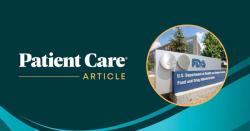© 2025 MJH Life Sciences™ , Patient Care Online – Primary Care News and Clinical Resources. All rights reserved.
Trends in Atrial Fibrillation Therapy: 2002 to 2011
Overall it looks as though pharmacologic rate control is still the preferred therapy for new onset AF, but a new study identifies some interesting trends in the use of drugs for both rhythm and rate.
As our knowledge of atrial fibrillation (AF) continues to expand, the past several years have seen changes in our management of this complex disease, including new interventional approaches. And yet, the debate over the superiority of rate vs rhythm control continues to rage on with the pendulum swinging back-and-forth ever so slowly.
Recently, a group from the Iowa City VA Medical Center investigated changes in the use of oral rate and rhythm control therapy for AF, revealing trends in pharmacologic management of AF in the VA Medical System from 2002-2011. The results of the observational study were published in the American Heart Journal.
There were 406,168 episodes of new AF between 2002 and 2011 in outpatients and inpatients from the VA Medical System. Of these, episodes were excluded if patients were not receiving care at the VA for the prior 12 months, if multiple episodes occurred in the same patient, or if occurrence of an episode was preceded by an oral antiarrhythmic or chemical/electrical cardioversion. This left 275,559 episodes for inclusion. Several notable trends emerged in medication use from 2002 through 2003 to 2010 through 2011. First, there was a 4% decrease (74.9% to 70.9%) in the percentage of patients receiving oral rate control medication. Second, and likely as a result of data emerging on its lack of efficacy, there was a >50% decrease in the use of digoxin and an overall increase in the use of metoprolol and carvedilol. Third, the use of oral antiarrhythmic drugs decreased from 13.5% to 11.6%; specifically, amiodarone use fell by 17%.
These results demonstrate that, overall, the large majority of patients with new AF are treated with a rate control strategy. The overall use of antiarrhythmic agents, however, is decreasing, a trend most likely related to the increased use of alternative strategies such as ablation therapy and to increased awareness of the adverse effects associated with these drugs.
Additional studies are necessary to assess trends in oral anticoagulation for AF as they, too, would reflect our growing understanding of the disease and the impact of incorporating the new oral anticoagulants into clinical medicine.
References:
Vaughan-Sarrazin MS, Mazur A, Chrischilles E, Cram P. Trends in the pharmacologic management of atrial fibrillation. Am Heart J. 2014;168:53-59. doi: 10.1016/j.ahj.2014.03.024


